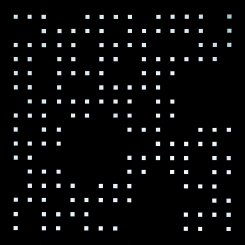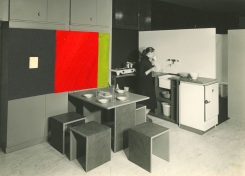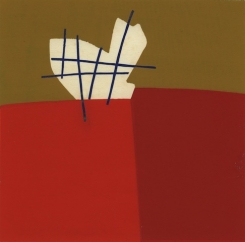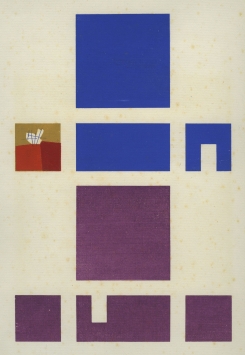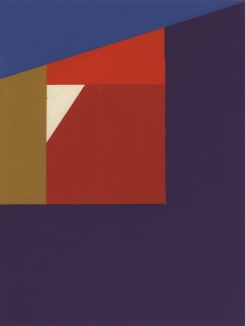Image

After Cobra, Constant Nieuwenhuys' work becomes more abstract. It develops more and more towards spatial experimentation and architecture. He starts to study architecture with the books of Aldo van Eyck.
In the fall of 1952 Constant receives a scholarship from the Arts Council of Great Britain to study in London for three months. There he meets Henry Moore (website), Anthony Hill, Kenneth Martin, Ben Nicholson, Barbara Hepworth, Roger Hilton and Victor Pasmore amongst others. He experiences the art climate in London as very welcoming. He believes that art is assessed more objectively in London in contrast to Paris.
He lives in the vicinity of Kensington Gardens and during his morning strolls through the bombarded city he starts to ponder on the question of how the construction of a city contributes to the quality of life. During his stay in London he realises how the modern structures that surround us influence us. He finds that most modern buildings are mainly practical and mindnumbingly boring. They offer no room for a playful and creative lifestyle. Back in Amsterdam he focuses more and more on architecture and the urban environment.
Together with Aldo van Eyck, whom he met during his Cobra days, he publishes a manifest Voor een spatiaal colorisme (For a spatial colorism). The manifest is an experiment with space and color as a reaction to the passive role that color plays in modern architecture. Together they design a room for the exhibition Mens en huis (Man and home) which takes place from November 21st 1952 till January 5th 1953 at the Stedelijk Museum Amsterdam.
In 1954 Constant works together with Gerrit Rietveld on a design for a model home for the department store De Bijenkorf. The model is exhibited life size in the installation Kleurenharmonie in uw woning (Harmonie of colors in your house) at De Bijenkorf in Amsterdam.
During his Cobra days he focuses on collective art and rejects individual art, now he goes even further by striving for a synthesis of arts. Boundaries between art professions like painting, sculpting, architecture and technology need to be eradicated. He deems this absolutely necessary to break through the monotony of urban architecture of the fifties and the underlying political power structure.
In these years Constant looks for allies in his quest for synthesizing the arts. He visits CIAM (Congrès Internationaux d’Architecture Moderne), he works together with architects like Aldo van Eyck, Gerrit Rietveld and former Cobra member, Stephen Gilbert. Together with the Hungarian sculptor, Nicolas Schöffer, and Stephen Gilbert he establishes Néovision in 1954. And on January 24th 1955 Liga Nieuw Beelden is founded and Constant joins the movement together with other former Cobra members like Eugène Brands, Anton Rooskens and Theo Wolvenkamp. However driven he is, Constant's attempts to achieve a true synthesis of the arts mostly fail due to lack of financial resources.
Early Period 1920-1947
CoBrA 1948-1951
Towards a Synthesis of Art 1952-1956
New Babylon 1956-1974
Situationist International 1958-1960
Late Period 1974-2005

